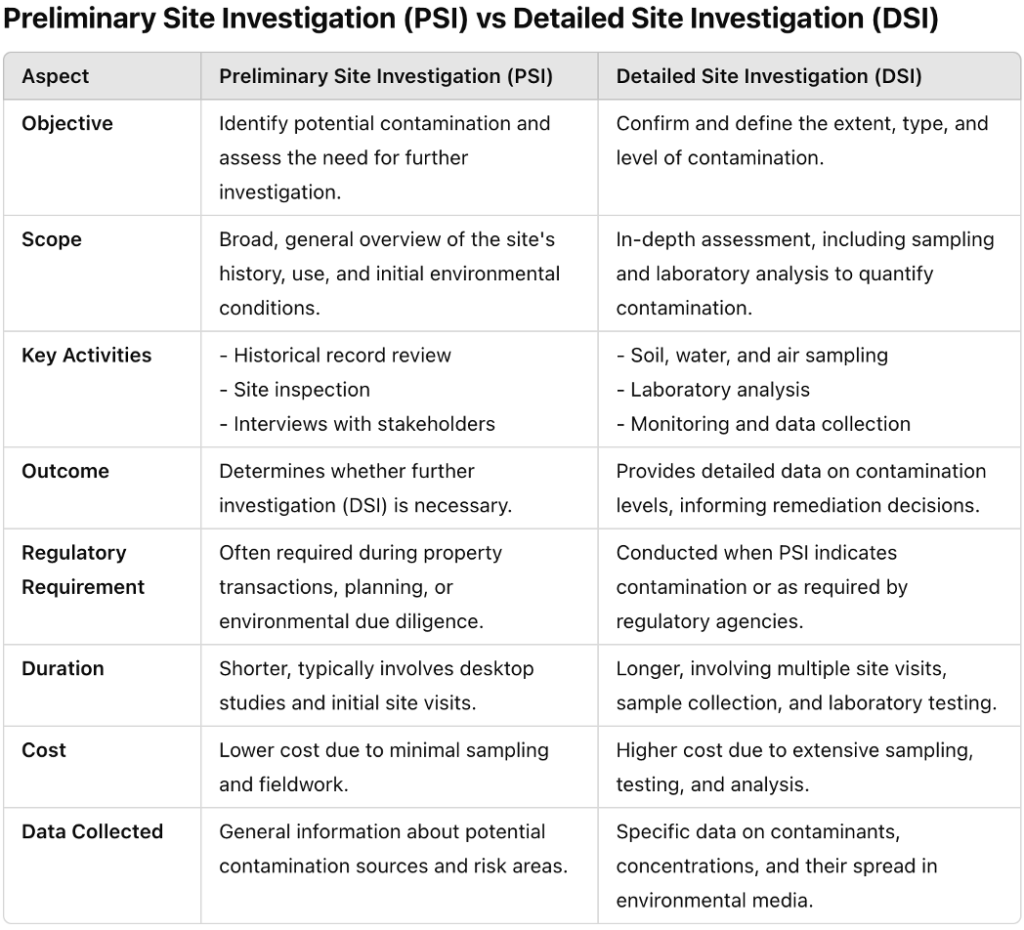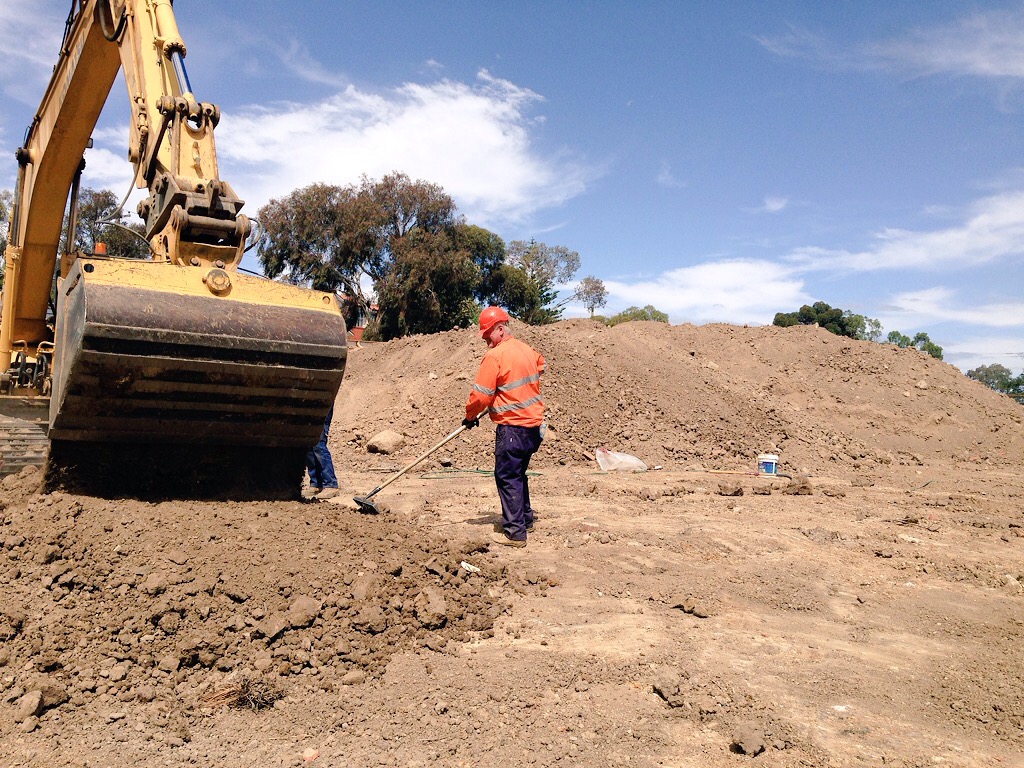Soil Testing – Land Contamination Assessments
Land Contamination Remediation Project – Sydney
Soils are considered potentially contaminated if they:
- have been mixed with any wastes, or
- contain soil of unknown origin that has been brought onto a site, or
- arise from sites where former uses include industrial, commercial, mining or agricultural activities, or
- have had manufactured chemicals applied.
Integrated Environmental offers the following Land Contamination Assessment Services:
- Soil Contamination Assessments for Council development applications
- Preliminary Site Investigation (Stage 1)
- Detailed Site Investigation (Stage 2)
- Remedial Action Plans / Site Management Plans (Stage 3)
- Validation (Stage 4)
- Soil Waste Classification
- Acid Sulfate Soil
- Assessment and Management
- Testing for specific contaminants e.g contamination caused by PFC containing firefighting foams

Prevention of site contamination involves several key principles:
- Prevent Contamination: Further contamination must be avoided, and Investigation or Screening Levels should not be viewed as targets for allowable contamination.
- Maintain Natural Quality: Changes in the quality of soil and water due to contamination should be non-existent or minimal, acknowledging that some legitimate activities may increase background levels when compliant with laws and best practices.
- Regulatory Control: Contaminated sites should be managed based on the nature and concentration of contaminants, including regulations on use, storage, transport, and disposal.
- Responsible Planning: Authorities should ensure any site proposed for development or change in land use is suitable, especially if it has a history of potential contamination.
- Safe Decommissioning: Industries must take measures to decommission sites safely to minimize long-term environmental impacts.
- Accessibility of Information: Information about site contamination should be available to the community, particularly to those making property decisions.
- Community Engagement: Engagement with potentially affected communities should start early and be maintained throughout the contamination assessment process.
- Cultural Considerations: The significance of culturally important sites, especially to indigenous people, should be respected.
- Education: Educational programs should be implemented to raise awareness about contamination and prevention across all sectors.
- Comprehensive Assessment: Site assessments should be thorough, conducted by qualified professionals, and include community and environmental health considerations.
- Data Integrity and Risk Assessment: Quality assurance in data collection and chemical analysis is crucial, with assessments including potential human health and ecological risks.
- Objectives and Outcomes: Assessments should balance the site’s use with the protection of health and the environment, aiming for a consistent approach across jurisdictions.
The overarching goal is to ensure no new contamination occurs and existing contamination is managed effectively, always prioritizing human health and environmental safety.
Reasons for requiring a Land Contamination Assessment include:
Planning and development


Decommissioning of industrial activities
Industries are responsible for ensuring that, when equipment on a site is dismantled or a site is otherwise decommissioned, appropriate measures are taken to leave the site in a safe and stable condition in order to prevent or, as far as practical, minimise adverse long-term environmental (physical, social and economic) impacts.
Availability of site contamination information
Without detracting from any obligation of disclosure, which may exist at law, all relevant information on site contamination should be accessible to the community and particularly to those who need to make informed decisions, for example, potential land purchasers. Prospective purchasers of land should make appropriate enquiries to satisfy themselves regarding the condition of a site and any financial liabilities that may apply for the current use or the proposed future use of the land.


Risk to Human Health
Human health should be a primary concern when assessing land use and exposure scenarios.
There should be appropriate occupational health and safety measures (including training) for personnel involved in assessment of site contamination.
Community health assessment and monitoring for specific health effects may be warranted where appraisal has indicated a significant risk of exposure to contamination.
Environmental impact
The assessment of site contamination should include a consideration of risks to water resources and other ecological risks.During the assessment, the on-site and off-site impacts of contaminants should be appropriately managed to prevent adverse impacts, particularly impacts relating to air emissions, surface water and groundwater.

FAQs: What People Ask the Most
The assessment of contaminated sites typically involves four phases:
- Preliminary site investigation
- Detailed site investigation
- Site remedial action plan development
- Site validation and ongoing monitoring
A land contamination assessment is an important step in development applications or land-use conversions. It involves evaluating past activities on the site, identifying potential contaminants, assessing site conditions, and determining the need for further investigation.
The site contamination measure refers to the National Environmental Protection (Assessment of Site Contamination) Measure (NEPM 1999). This measure provides guidelines for assessing and managing contaminated land in Australia. It outlines protocols for identifying, assessing, and remediating contaminated sites to protect human health and the environment.
Sampling strategies for contaminated land include judgmental, systematic (such as square grid), simple random, and stratified methods. Each approach aims to collect representative samples for accurate assessment and remediation.
For more information contact Paul on 0448 298 485 or email info@integratedenvironmental.com.au
